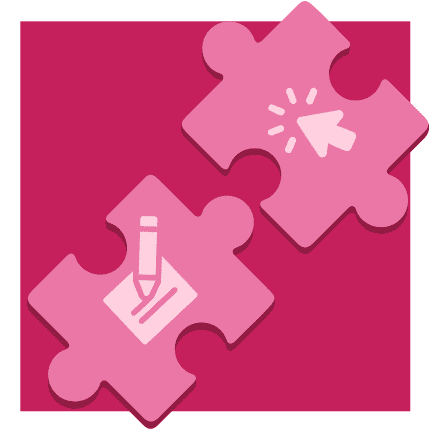Content Marketing and PPC Advertising: Better Together

While some businesses invest solely in one type of advertising and marketing, like social media, others thrive by seamlessly combining multiple strategies, like content marketing and pay-per-click (PPC) advertising. Both of these methods can give a boost to your business through improved SEO, more customers, and a more robust online presence. How can your business harness the power of these two strategies to grow now and in the future?
What Comes First, Content or Advertising?
Content is the backbone of all advertising, whether it is a brief piece of ad copy or an extensive landing page. Creating high-quality content will ensure that users have an engaging, compelling experience when they click on your ad. For this reason, great content should come first in your process. When creating content, writers will consider many of the same things that you will when customizing your PPC campaigns:
- Who your target audience is
- What your target audience wants
- What words, images, and types of content get results
Over half of businesses currently spend time and money on their content marketing plans, which means there is a good chance your business is already posting on a blog or developing content. If you don’t have the time, talent, or budget for in-house content creation, consider outsourcing it to freelancers. Once you have engaging content, advertising becomes easier.
How Can You Use Content for PPC Advertising?
PPC advertising often relies on highly customized sales funnels and campaigns that use a combination of pictures, videos, and text to make the sale or get the desired response. However, when all you are thinking about is getting the user to perform the final action, it’s easy to lose sight of what your target audience is looking for.
Instead of your campaign redirecting to a sparse landing page on an empty website, you can welcome them to a carefully developed, robust website with plenty of informative blogs and features outside of the landing page. Content marketing can increase trust and show browsers that you care about answering their questions and concerns. Customers are more likely to trust websites that feel established, and great content also increases the likelihood the visitor will stay on your website longer.
You can enhance your landing page experience to tell the story of your brand and develop high-quality inbound leads using content already on your website and in your marketing collateral. How can you leverage your content throughout your landing page and sales funnel?
- Awareness Stage: You will identify and explain the problem or need that the customer has through infographics, blog posts, videos, articles, or other content.
- Consideration Stage: Now that the customer understands their need or problem, your content can fill in the gaps as they research through reviews, white papers, e-books, landing pages, and blog posts.
- Decision Stage: The client makes a purchase and decides who is the best fit for their needs through blog posts, tutorials, demos, trials, and other pieces of content.
Can PPC Advertising and Content Marketing Help With SEO?
Many companies invest in content marketing as part of a multifaceted SEO strategy designed to bring more interested customers to their websites. Once you’ve reached momentum with your blogs and landing pages and they are organically appearing close to the top on search engines, getting traffic is less of a priority. However, when you are first struggling to get prospective buyers, advertising can bring people to your content marketing and, in turn, help with your site’s SEO.
Because all three of these marketing and advertising efforts are intertwined, you can get tremendous value for your time and money. The content you create can become the cornerstones of your SEO strategy and be leveraged on social media and search engines through PPC advertising.
How Does a Multifaceted Marketing Strategy Develop More Leads?
Websites with a diverse range of pages and expansive site maps often rank higher in search results. Research has shown that websites with 400-1,000 pages get six times the leads of sites with only 51-100 pages. When your website has a dynamic content marketing strategy that involves quality blog posts optimized for search engines, it’s easy to get more traffic and gain quality leads as a result. Importantly, this is not just true for the B2C space, but also the B2B space. B2B marketers with an on-site blog get 2/3 more leads than companies without one.
Retargeting is a key component of many PPC campaigns. After your visitor leaves the site without engaging or without completing their purchase, you can retarget them using content already on your site. For example, if they added a product to their cart that you have an informative blog post about, you can use that content in your advertising to them. If you offer services, the blog post you utilize could describe the benefits of your service. Content marketing is not just about closing the sale; it is also about developing a trusted relationship with your target audience.



